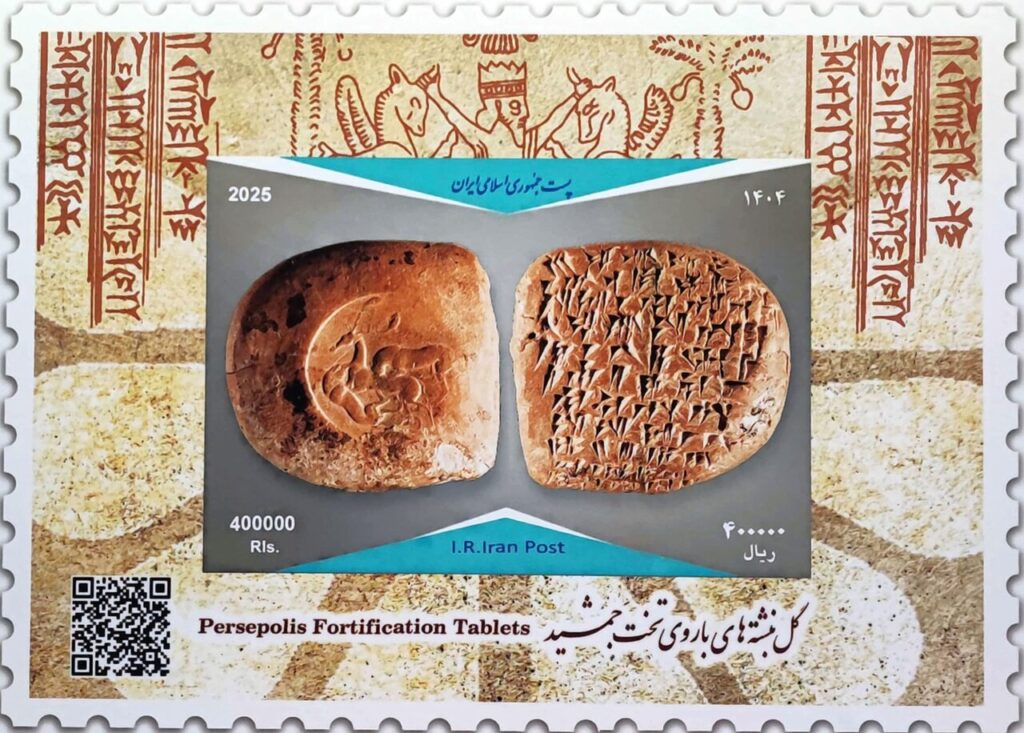Tehran – On Sunday, May 18th, on the same day as International Museum Day, a ceremony was held at the National Museum of Iran, and a commemorative stamp was released in honor of the fortress tablets in Persepolis.
The event was attended by the Deputy Minister of Cultural Heritage, Head of the National Museum Committee (ICOM), Deputy Minister of Communications, CEO of the Postal Company and Director of the Iranian National Museum.
Persepolis fortress tablets were discovered around 90 years ago during an archaeological excavation in Persepolis and later commissioned to the University of Chicago Oriental Institute for further research. These clay tablets contain records of daily events and management activities from the middle of Darius I’s reign, dating back to 509-493 BC. The documents were written and sealed in cities, villages, reservoirs and way stations in the regions, including modern-day Fars Province and parts of Kzestan.
Most of these tablets provide detailed reports on the transport, storage and distribution of barley, wheat, wine, beer, fruits, chicken and livestock as well as essential supplies such as food and drinks. They also provide insight into the complex management system of the Achaemenid Empire, detailing the lives of workers, artisans, officials, travelers, kings, and kings, and religious activities.
The tablet, chosen as a commemorative stamp, is a tongue-shaped type, featuring the impression of a sticker with an inscription on one side and two lions hunting deer on the other. The text mentions an individual named Kambarma (Gobrias) who received three drinks at a place called Besitme and Lidoma. The tablet dates back to the winter of 498 BC and served as a travel document sealed with the king’s mark where the Kanbalma was carried.
This clay tablet is part of a collection of at least six texts in which Kambalma and another individual recorded another individual named Radushdukiya during a month. Radushdukiya is called the wife of Mardonius (the king’s son-in-law), and is probably called Gobryas’ stepdaughter (Pilpia). The high rations and the family connections of Kambalma suggest that he is the same person known as Gobarba (formerly Persian) and Gobrias (Greek).
morning

